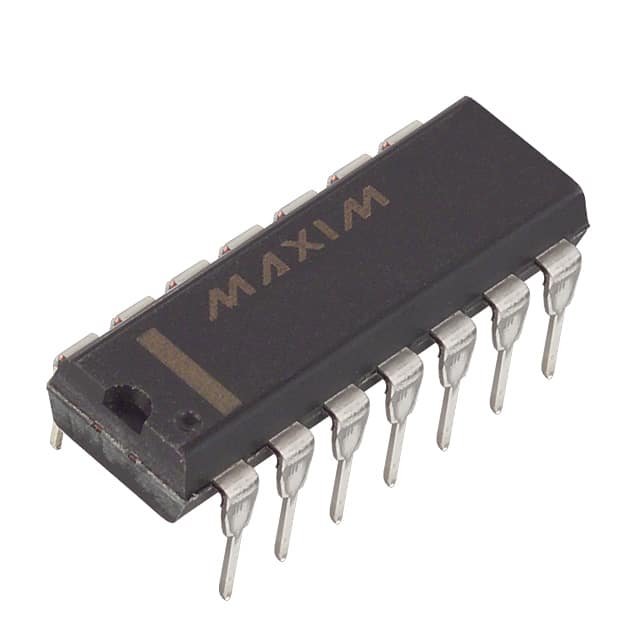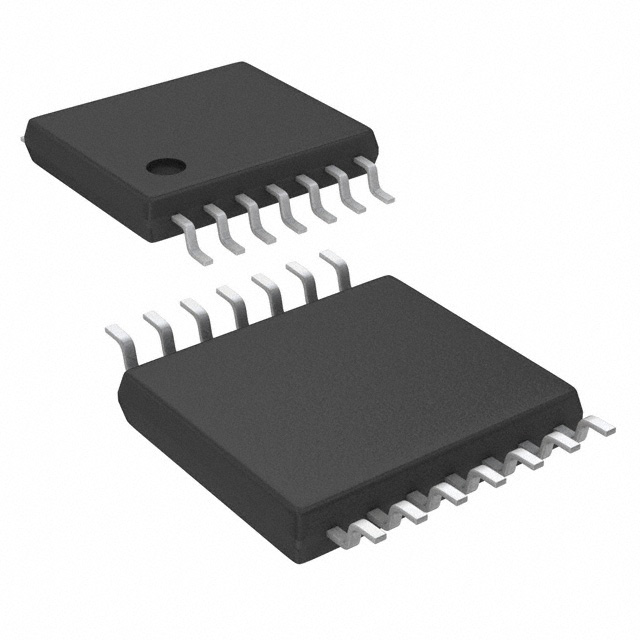MAX5409EEE+ Product Introduction:
Maxim Integrated Part Number MAX5409EEE+(Digital Potentiometers ICs), developed and manufactured by Maxim Integrated, distributed globally by Jinftry. We distribute various electronic components from world-renowned brands and provide one-stop services, making us a trusted global electronic component distributor.
MAX5409EEE+ is one of the part numbers distributed by Jinftry, and you can learn about its specifications/configurations, package/case, Datasheet, and other information here. Electronic components are affected by supply and demand, and prices fluctuate frequently. If you have a demand, please do not hesitate to send us an RFQ or email us immediately sales@jinftry.com Please inquire about the real-time unit price, Data Code, Lead time, payment terms, and any other information you would like to know. We will do our best to provide you with a quotation and reply as soon as possible.
Introducing the Maxim Integrated MAX5409EEE+, a high-performance, low-power, 256-tap, nonvolatile digital potentiometer. This innovative device offers a wide range of features and is designed to meet the demanding requirements of various applications.
The MAX5409EEE+ boasts a 256-tap resolution, allowing for precise and accurate adjustments. With a low power consumption of only 0.5mA, it is ideal for battery-powered applications, ensuring extended battery life. The nonvolatile memory feature ensures that the potentiometer settings are retained even when power is disconnected, eliminating the need for recalibration.
This digital potentiometer offers a wide operating voltage range of 2.7V to 5.5V, making it compatible with a variety of systems. It also provides a high resistance range of up to 100kΩ, enabling it to be used in a wide range of applications.
The MAX5409EEE+ finds its application in various fields, including audio equipment, instrumentation, and industrial control systems. It can be used for volume control, tone adjustment, and gain control in audio systems, providing users with a seamless and customizable audio experience. In instrumentation, it can be used for calibration and fine-tuning of measurement equipment. Additionally, in industrial control systems, it can be utilized for precise control of motor speed and position.
With its exceptional features and versatile application fields, the Maxim Integrated MAX5409EEE+ is the perfect choice for engineers and designers seeking a reliable and efficient digital potentiometer solution.
Digital Potentiometers ICs are a new type of CMOS digital and analog mixed signal processing integrated circuit that replaces the traditional mechanical potentiometer (analog potentiometer). It is usually composed of multiple fixed resistors and a movable contact. Its working principle is to control the position of the potentiometer through digital signals, thereby changing the resistance value in the circuit. Digital Potentiometers ICs have the advantages of high precision, good stability, and fast response speed. Before using a digital potentiometer, please select the appropriate potentiometer model and specifications.
Application
Digital Potentiometers ICs are powerful, flexible and promising electronic components that are rapidly promoted at home and abroad. They are widely used in various electronic devices, such as audio equipment, instrumentation, computers and communication equipment, household appliances, health care products, industrial control and other fields.
FAQ about Digital Potentiometers ICs
-
1. What are the components of a digital potentiometer?
A digital potentiometer mainly consists of two parts: a voltage divider and a controller.
The voltage divider consists of a series of resistor elements that divide the input voltage according to a certain ratio. Each resistor element is connected to the input pin of the controller. The controller is responsible for reading the control signal and opening or closing the corresponding switch according to the level of the signal, thereby changing the total resistance.
-
2. What is the difference between IC and digital IC?
The main difference between IC and digital IC is that they process different types of signals. IC processes continuously changing analog signals, while digital IC processes discrete digital signals.
Specifically, IC (integrated circuit) is a microelectronic device or component that uses a certain process to interconnect transistors, resistors, capacitors and other components and wiring, and is made on a small piece of semiconductor wafer, and then packaged to form a circuit with specific functions. Integrated circuits have the advantages of small size, light weight, long life and high reliability.
Digital IC specializes in processing digital signals, which are discrete in time and amplitude. The design focus of digital IC is on the optimization of logical relationships and system architecture, pursuing the smallest line width, lowest power consumption and fastest transmission speed. Examples of digital ICs include CPUs, microprocessors, microcontrollers, etc., which are widely used in computers and other digital systems.
-
3. How to use digital potentiometers?
Digital potentiometers are a new type of CMOS digital and analog mixed signal processing integrated circuit that replaces traditional mechanical potentiometers. It is controlled by digital inputs, produces an analog output, and has precise resistance adjustment functions.
The basic components of digital potentiometers include voltage dividers and controllers. The voltage divider consists of a series of resistor elements that divide the input voltage according to a certain ratio; the controller is responsible for reading the control signal and opening or closing the corresponding switch according to the high or low signal, thereby changing the size of the total resistance.
When using a digital potentiometer, you first need to make a hardware connection. For example, connect the encoding mode of the EC11 digital potentiometer to a specific pin of the timer. Then, the mode of the encoder is controlled by software to adjust the digital potentiometer. The specific operations include entering the potentiometer mode, adjusting the value, and saving the setting.
 Lead free / RoHS Compliant
Lead free / RoHS Compliant






























